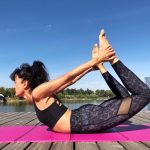German-born Joseph Hubertus Pilates developed a special exercise program, which he later refined and named it Contrology. The program was designed to enhance good posture and to increase both the strength and flexibility of the body through exercises done with the apparatus invented by Pilates himself His New York studio, where he emigrated there in the mid-1920s, attracted all kind of people: socialites, gymnasts, athletes and most important, dancers. The dance community had a strong influence on the evolvement of the method. Famous dancers and choreographers like Balanchine, Ted Shawn, Martha Graham and Jacques D’Amboise sought Pilates not only for conditioning but also for healing.
Over the years, different approaches to Pilates method developed.
Traditional Pilates
The traditional method is based only on Joseph Pilates’ original work and doesn’t deviate from the original 34 exercises and the order in which Pilates has envisaged them. A key feature of the traditional approach to Pilates is the position of the pelvis during mat-based exercises: abdominal exercises are generally taught in a posterior tilt so that the entire back is pressed into the floor (imprint)
Contemporary Pilates
The contemporary method is also based on Joseph Pilates’ original work but has been adapted and modernized. It has new and varied exercises which can be adapted to be in line with the abilities of the people practicing. Exercises are generally taught with the spine in a neutral position which, which means that, when lying on the back, there is a space between the lower back and the floor (respecting the natural curve of the spine). Body Arts and Science International (BASI) maintains the essence of Joseph Pilates’s work, the art and science of the his method in a contemporary context. The original repertoire is taught in its entirely, all the equipment is used, together with more modern equipment and contemporary scientific concepts are applied. Rehabilitation and reeducation are integrated into a holistic format. The exercises are adapted to each individual need and goal.
Pilates for Rehabilitation
They have created specific exercises for the treatment using the Pilates equipment, which may be very different from the Pilates original repertoire.
Pilates for Specific Populations
Some methods address to select populations such as dancers, athletes, etc. They have also changed the repertoire in order to adapt to specific needs, forgoing the original Pilates exercises and philosophy.
I will end this small article with a quote from Joseph Pilates and a YouTube video showing him teaching on Reformer.
“Concentrate on the correct movement each time you exercise, lest you do them improperly and thus lose all vital benefits.”





